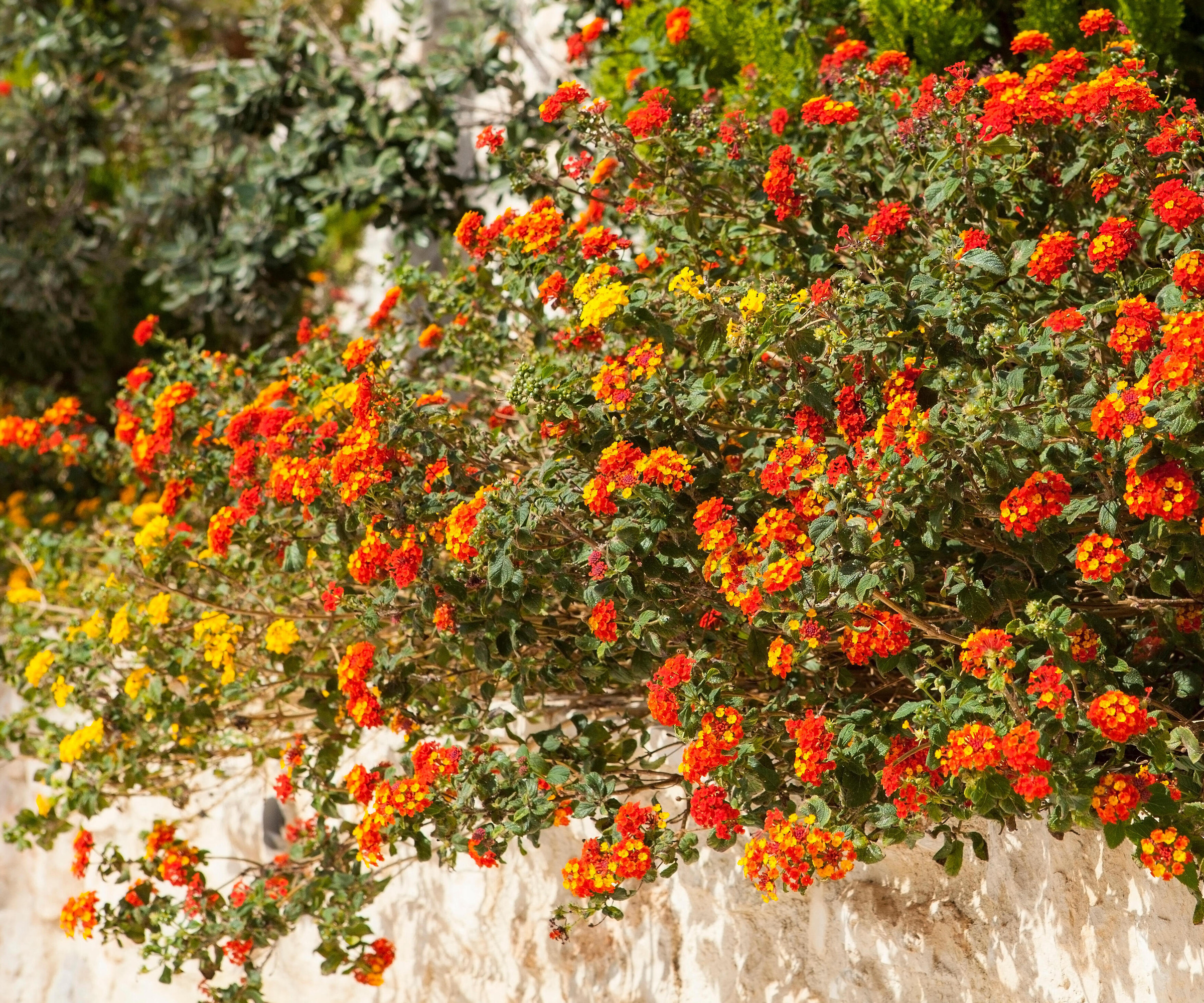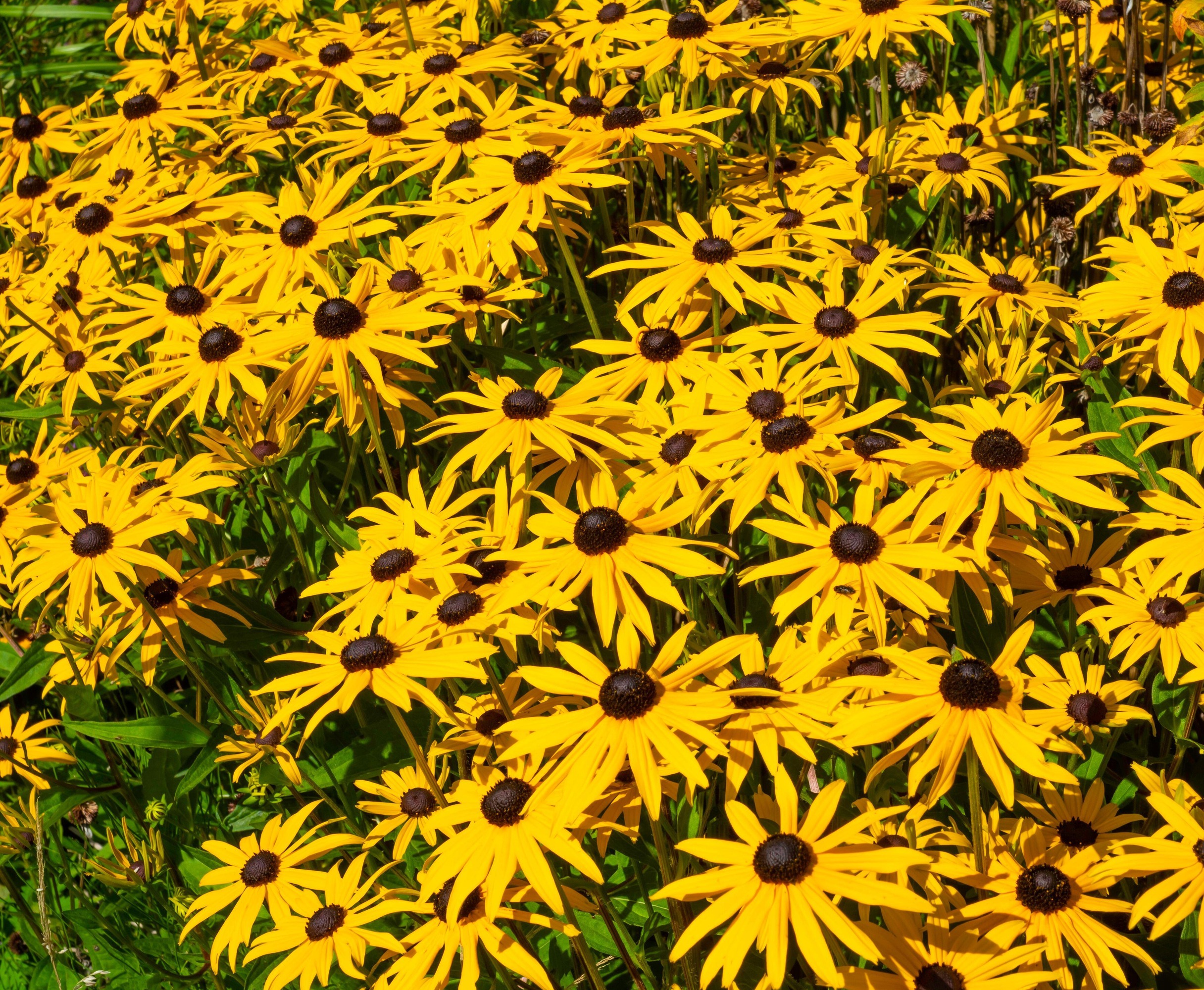
If you live in an area with hot and arid summers, low-maintenance, drought-tolerant plants are a win-win. Plants that can thrive with minimal fuss enable your garden to look gorgeous throughout extended dry spells, without any extra effort from you.
Plants that are adapted to a hot, dry climate will cope better in extreme heat. They'll require less watering too; important if there is a ban in your area. No-one wants to see their plants scorched and suffering in the heat. Or to have to constantly tend to them when there's been no rainfall for weeks.
If your yard experiences long spells without rainfall, drought-tolerant planting ideas are a must. Some of these plants provide lush green foliage throughout the year, while others burst with blooms when the rain does come - and several will flower even when it doesn't. So, discover 10 of the best plants gardening experts say are ideal for dry regions - and won't cause you any fuss.

Consider native plants for easy going, drought-tolerant choices
'With extreme weather events on the rise, we can expect more frequent and longer periods of drought,' says Kim Eierman, horticulturalist and founder of EcoBeneficial. 'We need to start thinking differently about watering, regardless of where we live.
'Regional native plants, properly sited, will generally require fewer inputs and less water, than many non-native plants.
'Native plants are usually low maintenance. Although bear in mind that low-maintenance does not necessarily mean no maintenance.'
Consider this mix of plants alongside drought tolerant trees for a yard that's more self-sustaining, yet still blooming in the heat.
1. Texas Sage (Leucophyllum frutescens)

Native to the south-western US, Texas sage is a large shrub that is well-adapted to dry spells. However, it produces pretty flowers from spring through summer in response to increased humidity.
'While purple blooms are most common, lavender, pink, and white flowering varieties are available,' explains Noelle Johnson, (aka A-Z Plant Lady), horticulturist and landscape consultant.
'Texas sage has an attractive natural shape and, if given room to grow to its mature size, needs pruning every few years to rejuvenate. Its foliage color ranges from blue-gray to medium-green, depending on the species and variety.
'This shrub does best in full sun and well-drained soil, which must be allowed to dry out between watering.'
Suitable for USDA hardiness zones 8-10.
2. Blanket Flower (Gaillardia x grandiflora)

Blanket Flower is a pretty perennial with brightly-colored, daisy-like flowers, which bloom throughout the warm season in rich shades of red, orange, and yellow.
A wildflower native to western regions of the US as well as the Midwest and parts of the Northeast, these fast-growing flowers do best in hot, dry climates.
'Blanket flowers have a clumping growth habit and thrive in full sun,' says Noelle Johnson. 'Although, you will need to water them when the top 3 inches of soil is dry.'
Suitable for a wide range of hardiness zones, from zones 2b to 10.
3. Penstemon (Penstemon spp.)

These clumping perennials have spikes of dainty flowers that appear in spring in warm regions and summer in cooler climates. Penstemon flowers come in many different shades, from red, orange and yellow, to pink, purple, blue, and white, while the foliage color varies from blue-gray all the way to deep green, depending on the species.
'Penstemons are native to western regions of North America, so most species enjoy full sun and do best in low-nutrient, well-drained soil,' explains Noelle Johnson. 'These plants can suffer from overwatering, so allow the soil to dry out for 5-7 days or more before watering again.'
Hardiness varies according to species, and ranges from zones 3 to 10.
4. 'Red Push' Pistache Tree (Pistacia x 'Red Push')

There are a number of hybrids originating from the Chinese Pistache tree and the 'Red Push' is a favorite. Although, created for dry, desert climates, 'Red Push' is also suitable for Mediterranean and moist, subtropical regions too.
'Red Push Pistache Tree is an ornamental tree and doesn't produce nuts, despite its name,' explains Noelle Johnson. 'It's deciduous with a single trunk that has lush green foliage creating a lovely shade canopy.
'In the fall, you can expect colorful foliage in spectacular shades of red to appear. These trees can be grown within a lawn or in a xeriscape setting in full sun. Water 'Red Push' deeply when the soil dries out - but be aware this tree does not like to be kept constantly moist.
Suitable for USDA hardiness zones 7-10.
5. Lantana (Lantana Camara)

This attractive and adaptable plant is great grown as a groundcover in your flower beds or along a garden wall, as well as planted in containers and hanging baskets. Bursting with blooms from fiery orange and red to vibrant yellow and softer purples and pinks, Lantana will provide plenty of color, with little fuss.
'Lantana is a vibrant, colorful plant that blooms all season long, attracting butterflies and hummingbirds to your garden,' says Maureen Wright, horticulturalist at Fast Growing Trees. 'It loves full sun and well-draining soil.
'Once Lantana is established, it requires minimal water and care, making it an excellent choice for hot, dry conditions. Just a light prune to shape and remove spent flowers is all it needs.'
Suitable for USDA Hardiness Zones 8-11
6. Salvia (Salvia spp.)

A relative of the herb sage, salvia originates from the Americas and the Mediterranean, so this plant loves a sunny spot and well-draining soil. Good for beds, borders or containers, there are a range of salvia species and cultivars, from small shrubs and bedding plants to taller types that are lovely as cut flowers. Salvia is easy to propagate too.
'Salvia is a hardy perennial known for its spiky, colorful flowers that attract bees and butterflies,' explains Maureen Wright, Fast Growing Trees.
'It is extremely drought-tolerant and needs only occasional watering. As well as being low-maintenance, it's resistant to pests, and deer and rabbits once established, making it a favorite for easy-care gardens. Simply deadhead spent blooms to encourage continuous flowering.'
- Suitable for USDA Hardiness zones 4-10.
7. Black-Eyed Susan (Rudbeckia hirta)

For a burst of easy, uplifting summer color, black-eyed Susan is hard to beat. Also know as Rudbeckia, this plant will grow in most zones, tolerating poor quality soil and heat. As well as attracting butterflies, the seed heads will provide food for songbirds in the winter, so black-eyed Susans are great for wildlife gardens too.
'Black-eyed Susans are cheerful, daisy-like flowers that add a splash of bright yellow to a garden,' says Maureen Wright. 'These plants are very drought-tolerant, needing little water once established.
'Not only low-maintenance and resilient, they only require occasional deadheading to extend their blooming period. They will bring beauty and color to your garden - and make gardening easy and enjoyable, even for the most novice of gardeners.'
Suitable for USDA Hardiness zones 3-9.
8. Knockout Rose (Rosa 'Knock Out')

Roses are drought-tolerant? Well, some varieties can tolerate less water than others. So if you love this 'queen of flowers' and thought you couldn't grow them in a hot region, you may have success with the Knockout rose. These beauties require 6-8 hours of sunshine each day, so find a suitably sunny spot and watch them bloom.
'Knockout roses are beloved for their continuous blooms and disease resistance,' says Maureen. 'They thrive in full sun and well-draining soil. These roses are more drought-tolerant than traditional varieties, needing only occasional watering once established.
'They require minimal maintenance too - just prune annually in early spring to keep them healthy and blooming.'
Suitable for USDA Hardiness zones 5-11
9. Houseleeks (Sempervivum)

Succulents do well in dry regions, as they are well adapted to the conditions. Most thrive outdoors only in the warmer parts of the world. There are some exceptions however, that will cope well even when the temperature drops, as long as the soil doesn't become too soggy.
'One of my favorite low-maintenance and drought-tolerant plants is the Sempervivum, also known as hen & chicks, or houseleeks,' says Sam Niemann, founder of plant food brand Bleume.
'There are over 40 different species of this plant in a range of colors and sizes. Sempervivums are clumping succulents that generally stay under a foot tall and roughly as wide.
'These are full sun plants that thrive best with at least 6 hours of sunlight per day although they do well in partially shaded locations as well. Not only are these plants drought-tolerant and low-maintenance but they are also very winter-hardy. Some varieties of Sempervivum are hardy all the way down to zone 3.'
Suitable for USDA Hardiness zones 3-8
10. Rosemary (Salvia rosmarinus)

A herb garden is essential for those who love to cook, however some herbs fair better in dry spells and require less maintenance than others. Rosemary is one of those herbs.
'Another of my favorite low-maintenance and drought-tolerant plants is rosemary,' says Sam. 'Not only does rosemary make an excellent kitchen herb it also thrives in the garden with little water and care.
'Rosemary is generally hardy down to zone 8 but can also be grown as an annual in colder climates. I particularly love including rosemary in drought-tolerant gardens because of the plant's light blue flowers in spring and summer. Although, for best results, I recommend providing rosemary plants with full sun.'
Suitable for USDA Hardiness zones 8-9, although some cold hardy varieties may survive 7-6 with adequate over-wintering protection.
Choose this 'Midnight Masquerade' plant for its pretty pink flowers and ability to attract pollinators to your yard. With a height of 36-40 inches give it plenty of space in a sunny spot.
Learn smart plant choices and dozens of techniques to limit water usage while growing a gorgeous and thriving garden from AZ Plant Lady, Noelle Johnson.
With striking lilac-purple foliage, this low-maintenance plant will thrive when positioned in a sunny yard. What's more, pollinators will be attracted to your borders for these blooms.
Often when we are faced with climatic gardening challenges, turning to what grows well naturally and researching the native flora is a beneficial way to get started. We can learn so much simply by observing the natural landscapes - and when you find plants among them that also don't need too much care and attention, you're setting your yard - and yourself - up for some real success.







